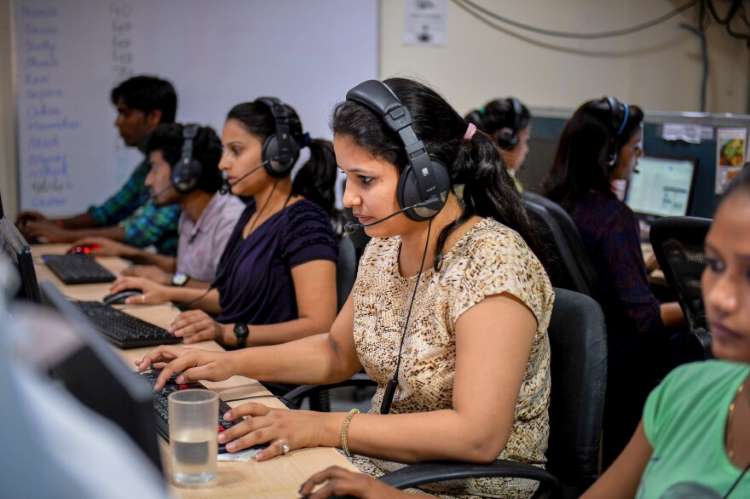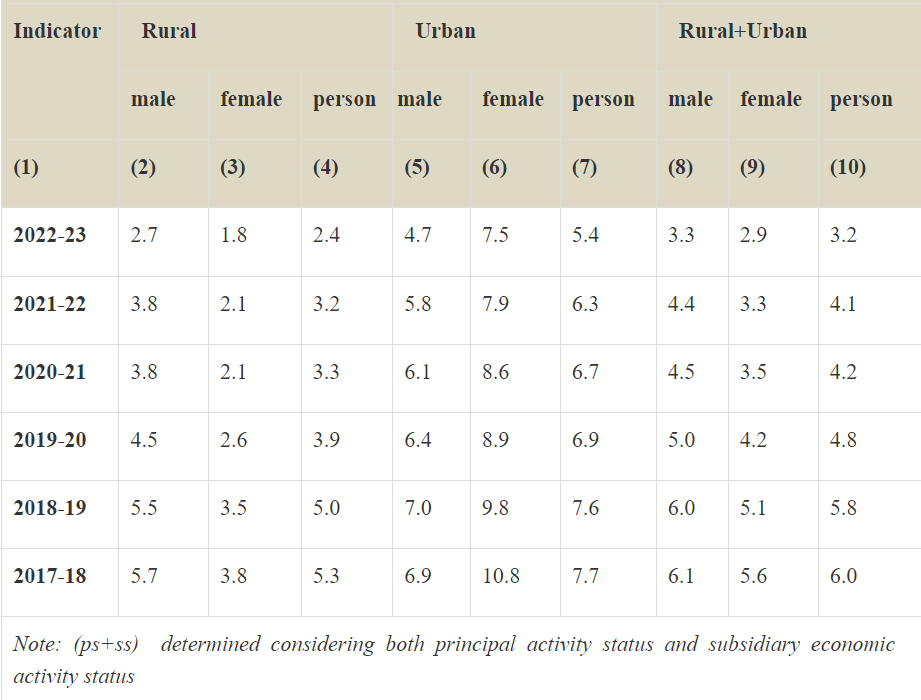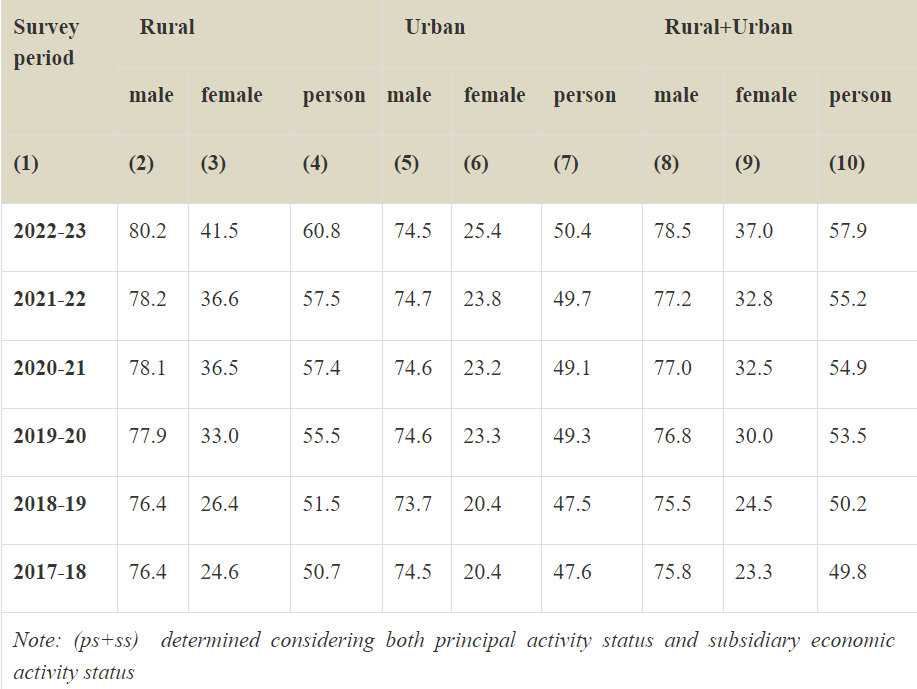
India’s employment data has been a subject of keen scrutiny in recent years, especially in the wake of the COVID-19 pandemic. The latest jobs data offer a snapshot of India’s unemployment scenario, shedding light on both the positive trends and persistent challenges. The National Sample Survey Office (NSSO) data released on Monday indicates a decline in India’s unemployment rate in urban areas to 6.6% during April-June 2023 against 7.6% a year ago period.
Another important trend observed is the lower unemployment rate among rural women compared with men, contrasting with urban areas where females face higher unemployment rates than their male counterparts. Additionally, the survey highlights the increased labour force participation rate (LFPR) at the national level, signifying more people seeking employment or engaging in work.
The data also raises concerns about the quality of employment. The share of individuals with regular or wage employment declined slightly, while self-employment, including unpaid household work or small businesses, increased. This shift implies that wage employment has not fully recovered to pre-pandemic levels, with more individuals turning to self-employment.
READ I DESH Bill: India looks to match China’s SEZ success
Urban unemployment: Post-pandemic recovery
The data focuses on urban areas and offers insight into the impact of COVID-19-related restrictions on unemployment rates. The data highlights a decline in the unemployment rate for both urban females and males, suggesting an overall recovery in urban employment. The labour force participation rate (LFPR) in the Current Weekly Status (CWS) also witnessed an increase, reaching a four-quarter high of 48.8%. This surge, driven partly by increased self-employment among women, indicates a rebound in women’s participation in the labour force.
While the data offers positive indicators of reduced unemployment rates, several challenges persist. The decline in wage employment and the rise in self-employment may indicate a need for policy measures to enhance the quality and stability of jobs. Stable wage employment is crucial for long-term economic security. Gender disparities persist, with higher unemployment rates among urban females. Encouragingly, the increase in women’s participation in self-employment is a positive step, but addressing gender gaps in wage employment remains essential.
Unemployment rate for persons of age 15 years and above

Labour force participation rate for persons 15 years and above

The data shows signs of post-pandemic recovery, but unemployment rates are still higher than pre-COVID levels. While economic indicators are promising, challenges such as inflation need to be managed carefully. The establishment of regular employment estimates through surveys is vital for informed policymaking. Consistent data collection and analysis will provide a better understanding of labour market dynamics.
The data reflects the dynamic nature of India’s labour market. While progress is evident, the challenges of job quality, gender disparities, and sustaining the post-pandemic recovery require continued attention. Effective policy measures and data-driven insights will be instrumental in addressing these challenges and ensuring a more equitable and prosperous employment landscape for all Indians.
A recent report by the Centre for Monitoring Indian Economy had reported that India’s unemployment rate in August 2023 fell to 6.8%, the lowest level since May 2022. The CMIE report also found that India’s labour force participation rate (LFPR) in August 2023 rose to 47.3%, the highest level since May 2020.
The share of individuals with regular or wage employment has been declining, while self-employment, including unpaid household work or small businesses, is on the rise. This shift implies that wage employment has not fully recovered to pre-pandemic levels, with more individuals turning to self-employment.
While the data offers positive indicators of reduced unemployment rates, urban unemployment rates are still higher than pre-COVID levels. The CMIE report found that the unemployment rate for urban females in August 2023 was 9.8%, compared to 6.4% for urban males. It also found that the urban unemployment rate in August 2023 was 6.8%, compared to 5.8% in August 2020.
It is important to address these challenges to promote inclusive and sustainable economic growth in India. Policymakers should focus on measures to enhance the quality and stability of jobs, address gender disparities in the labour market, and support the post-pandemic recovery.
It is also important to understand the role of technology and automation in the future of work. Technology and automation are rapidly transforming the global economy and workforce, and it is essential to understand how these forces are impacting the demand for different types of skills, as well as the creation and destruction of jobs. By investing in education and skills development, and by developing policies that support innovation and job creation, policymakers can help to ensure that India’s workforce is prepared for the challenges and opportunities of the 21st century.

